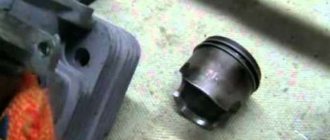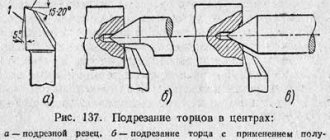Just 150 years ago, blacksmithing was at the peak of its popularity. Almost every village had a workshop where various things were made and repaired. For example, in Moscow in the mid-19th century there were about 300 forges. And in centers such as Kyiv or Donetsk there were schools of metal forging, where entire trends in blacksmithing were developed.
With the advent and development of machine metalworking, the development of such a craft began to decline. However, in industry, many components and workpieces are still processed by forging. In the 21st century, small-scale forgings are most often of an artistic nature.
How has blacksmithing developed throughout human history and how much has technology changed?
Craftsmanship for the people
The process of obtaining iron alone was long and very labor-intensive. First, ore was mined in the swamps, which took most of the autumn and winter, then it was dried and roasted, and then in metal smelters it was turned into iron.
But that was only half the story. The main task fell on the shoulders of the blacksmiths. A piece of metal had to be turned into an elegant sharp sickle or a strong sword, and the manufacture of each product required special skills and craftsmanship.
As for weapons, they became the “calling card” of ancient masters. Excavations of burials of the 10th century (near the Black Tomb not far from Chernigov) revealed to us, modern people, that in many respects the military victories of the Russians rested on the art of blacksmiths who made unique products.
Blacksmithing in Rus' was the main craft Andrey Shishkin “Dozor”, 2022
Surnames
Due to the fact that blacksmiths stood out from the general mass of the people earlier than others, and due to the fact that the blacksmith was usually a respected, fairly wealthy person.
Blacksmith at work
One of the most common surnames in the world is based on this profession - the all-Russian surname Kuznetsov, as well as Koval, Kovalev, Kovalchuk, Kovalenko (Ukrainian)
, Kowalski, Kovalchik
(Polish)
, Smith
(English),
Schmidt
(German)
, Lefebvre, Ferran
(French)
, Herrero
(Spanish)
, Darbinyan
(Armenian)
, Mchedlidze
(Georgian)
, Chkadua
(Megr.
.) , Azhiba
(Abkh.)
, Sepp
(Est.)
, Seppenen
(Fin.)
and so on.
Secrets of ancient jewelry
The beautiful half of humanity needed the services of blacksmiths no less than warriors. Every Russian beauty wanted to receive exquisite jewelry, such as neck hryvnias, thin rings, earrings or rings.
Wooden and stone forms on which the design of the future decoration was applied have been preserved to this day. The blacksmith poured molten metal into a mold, after which it became a part of the wardrobe of ancient Russian fashionistas. Most often, decorations depicted plants, birds, and mythical creatures (griffins, dragons).
Metal jewelry was also made by blacksmiths Andrey Shishkin “Devana”, 2013
Separately, I would like to note two types of jewelry that were considered the height of the skill of blacksmiths and jewelers. This is grain and filigree. The first art was the making of small silver grains (each of them corresponded to the size of a poppy seed). The grain adorned traditional Russian jewelry, among which crescent-shaped moons were very popular.
I was equally impressed by the filigree production. It was made from the finest silver or gold threads, which were carefully intertwined, turning into the finest “cobweb” pattern. Such products, of course, were very highly valued.
Wards of the Great God
Blacksmiths were respected and even feared, and over time, the image of a blacksmith became the embodiment of courage and strength. The patron of this craft was one of the greatest Slavic gods, Svarog. It was believed that the blacksmith to whom God gave his “spark” would master the skill in all its nuances and would even be able to influence people with its help. How?
There were popular beliefs that an experienced blacksmith could “forge” two destinies together. Perhaps this is some kind of hint of wedding rings or forged family amulets. Anyone who saw the blacksmith’s work could not remain indifferent. Just imagine: under his skillful hands, the iron became liquid, taking on the shape that the master gave it. Perhaps the blacksmith could control destinies in the same way?
Andrey Shishkin “Svarog - the god of blacksmithing”, 2014
History of development
Ancient Slavic traditions point to the ancient origin and honor of the blacksmith profession, because mastery of the hammer is attributed to their supreme deities: both the thunderer Perun and Svarog, who gave birth to the sun. Even Kiy, one of the founders of Kyiv, was initiated into the mystery of blacksmithing, according to the chronicles of those years.
Rich natural resources allowed ancient tribes to master working with limonite (swamp ore), the rounded stones of which were found everywhere. True, at that time, only the working surface of the instruments was predominantly forged from iron, which was placed on less durable copper or bronze bases. But with the increasing experience of blacksmiths, their craft allowed the craftsmen to gain a significant place in culture, and their products became firmly established in the everyday life of the population.
By the time of the formation of Kievan Rus, local craftsmen could already fully equip a warrior on the battlefield or a peasant in the field. And although most of the armor and tools were made of black iron, the men’s hands already held swords made of carbon steel, of which there were 2 types at that time. One, with an even distribution of carbon, was used to forge weapons. The second, of lower quality, was used for cast products.
Blacksmith or sorcerer?
The skill of the blacksmiths was impressive and even aroused some superstitious fears among people. Some beliefs have been preserved according to which a blacksmith could be successful only when he appeased evil spirits. It turns out that he himself supported evil spirits. Archaeologists often note that the blacksmiths' workshops are located far from the settlement.
Why? It seems to me that this was a desire to maintain safety. After all, think about it: as soon as one spark falls on the wooden wall of the building, the entire workshop will be engulfed in flames, and from it the fire will spread to other buildings.
It would seem that everything is logical, but our ancestors did not always support this version. The blacksmith sometimes seemed to be the master of the forces of fire and water. Some explained this by the great art that Svarog himself patronized, while others believed that such a gift could only be received from evil forces. In the “Izbornik of Svyatoslav”, dating back to 1073, the blacksmith is even called “khytrets”. True, there can be two meanings here - “cunning person” and “skillful master”. However, I think that one is not a hindrance to the other.
The forge was often located far from the settlement
Tools
In the forge you can find a lot of equipment, tools and devices. Basic (mandatory) equipment includes:
- Horn (device for heating workpieces)
- Container with water (for cooling).
- Large (main) anvil.
- Blacksmith tools and devices for hand forging of various types and purposes.
Anvil
Only the main tools, equipment and devices are named and classified. In addition to them, there are many others, with the help of which blacksmiths used to perform a lot of specific operations, which are now fully automated in industrial enterprises.
Forging complexes
Blacksmiths often united, creating entire complexes for the production of all kinds of products. Archaeologists saw an example of this during excavations in Staraya Ladoga. In the 8th century, there were several workshops there, each of which specialized in the manufacture of its own kind of products.
For example, in one of them pincers of different sizes were found, which were used in processing iron, making horseshoes and weapons. Nearby there was a small workshop, where even the anvil seems tiny in comparison with an ordinary one. Jewelry was made here, which had to be handled delicately and carefully. Finished products were also found. They consisted of several sword blades, rivets and a traditional ring decorated with the image of a bird.
Finds from excavations in Staraya Ladoga: a mold for casting payment bars, a pin, a pendant - “Thor’s hammer” Institute of the History of Material Culture of the Russian Academy of Sciences
At one time, there was an opinion among historians that in the 12th-13th centuries, blacksmithing in Rus' fell into decline, which was provoked by the fragmentation of lands and constant civil strife. I want to dispel this misconception - it was refuted by archaeologists, proving that in Kyiv, Chernigov, Vladimir and a number of other large cities, in small settlements and villages, blacksmithing only continued to develop, becoming an eternal art. Today, the work of ancient blacksmiths has been transformed under the influence of new technologies, but it is still alive and thriving.
Did blacksmiths possess secret knowledge? I think yes, since their work itself required special skills and abilities that could only come with knowledge of the matter. Did they practice witchcraft? Of course not, but their work itself reminded people of the power of the elements, which sometimes even a mortal can control. This was the very magic of blacksmithing.
Cover picture: Igor Ozhiganov “Svarog. Heavenly Blacksmith"
Forging in modern production
Forging at metalworking enterprises and in mechanical engineering today remains one of the main processes in the technological chain.
It is with the help of powerful forging equipment that multi-ton parts and their elements are processed. Also, one of the types of forging (stamping) made it possible to make the production of many things mass-produced and cheap. Modern forging production uses the following technologies.
- Hot and cold stamping.
- Pressing and crimping.
- Drawing.
- Rolling.
Hot and cold stamping
This is the process of shaping blanks according to a ready-made standard sample. That is, all those operations that a blacksmith used to perform to give the desired configuration and volume to a part are now performed at enterprises by stamping machines.
The following types of industrial stamping are distinguished: sheet and volumetric stamping.
In the first case, for example, holes are punched in sheets of metal, resulting in perforated surfaces.
The second option involves the production of any volumetric parts and elements using both cold and hot methods.
The use of this technology made it possible to reduce material costs and production time.
Pressing and crimping
Pressing also comes from forging technology, although today it is completely separated from this process.
Previously, before the advent of mechanization, the blacksmith carried out compaction and reshaping of the part manually through the so-called crimping technique. When the entire surface of the metal was forged.
An example of how a hydraulic press works can be seen in the video:
Today, at metalworking enterprises, this is done by multi-ton presses, which are capable of molding and compacting a multi-ton element in a short period of time.
Small forge shops also use pressing technology using mechanical or hydraulic equipment.
Drawing
Drawing example
A technology that also originated from forging metalworking methods. It allows, by pulling round parts through a hole, to make its diameter smaller.
Round elements are also formed using the forging method. For this, various machines (rotary) are used, where the process is practically automated.
Using this technique, various pipes and rolled products of round or shaped shapes are produced. As well as blanks for further production of shafts.
Rolling
This method makes it possible to produce so-called rolled metal, the list of items of which is quite large, ranging from fittings to steel pipes.
What was once done by a blacksmith is now done by a rolling mill, producing standardized products that go into further processing and construction.
Technologically, this is done by pulling heated metal blanks through the shafts of rolling equipment.
As with forging, this metalworking method allows you to obtain the required shape and the desired structure of the material.
Forging
Forging in industry occurs using various equipment and forging machines.
At the same time, the dimensions of the processed parts sometimes reach significant sizes and weight.










